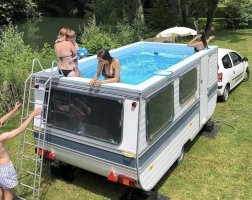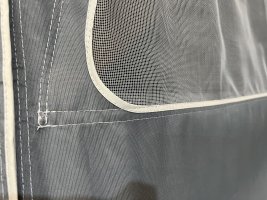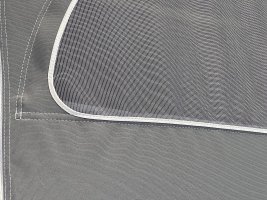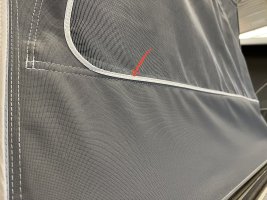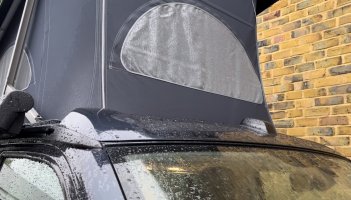S
Schadenfroid
Lifetime VIP Member
Looking for other peoples' experiences with the new double lined pop top roof (the one that is grey outside / cream inside), and any potential solutions to the problem of leaking though the seams and fabric.
In the last week we've had complaints from customers on all four of our March 2023 Oceans that the new style pop tops have leaked, mostly though the seams in heavy rain or constant drizzle. Each of them has the new double lined lined pop top roof (grey outside / cream inside). It's not a problem that we had with our "old style" 2022 vehicles (the ones with the single grey pop top fabric) - I think it might be an issue with the new design.
I've read on the forums that putting the pop tops through a few wet / dry cycles will sort the issue as the fibres tighten up - has anyone experienced this with the new style pop top?
If not, has anyone tried something like a Nikwax application to improve waterproofness?
In the last week we've had complaints from customers on all four of our March 2023 Oceans that the new style pop tops have leaked, mostly though the seams in heavy rain or constant drizzle. Each of them has the new double lined lined pop top roof (grey outside / cream inside). It's not a problem that we had with our "old style" 2022 vehicles (the ones with the single grey pop top fabric) - I think it might be an issue with the new design.
I've read on the forums that putting the pop tops through a few wet / dry cycles will sort the issue as the fibres tighten up - has anyone experienced this with the new style pop top?
If not, has anyone tried something like a Nikwax application to improve waterproofness?



